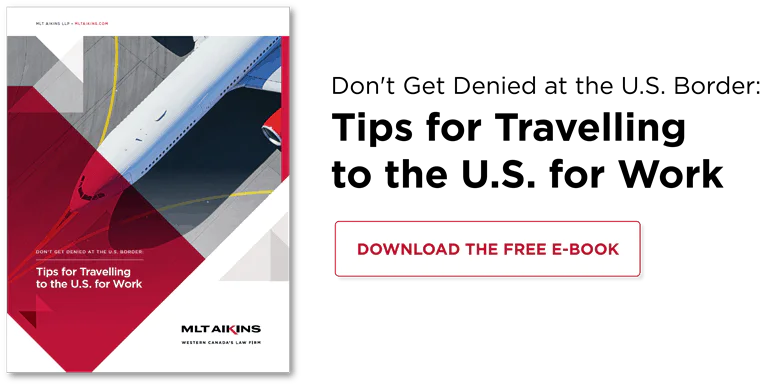Performing in the U.S.A. — Visa Information for Amateur Canadian Musicians

What does the tightening of security measures mean for musicians who wish to showcase their talent in the U.S.?
A common theme in U.S. immigration over the past several years is the tightening and enhancement of security measures by the Department of Homeland Security’s United States Citizenship and Immigration Services (“USCIS”) division and Customs and Border Protection (“CBP”) officers as discussed in our prior blog posts regarding Canadian travellers who have received travel bans from the U.S. for relatively minor infractions and increased regulations for Canadians applying for work visas upon travelling the U.S.
While many of the horror stories are centred on individuals who are travelling to the U.S. for business or pleasure, the additional security measures that have been formally and informally installed impact all travelers including those artists and performers who want to showcase and play gigs in the U.S.
Fortunately, USCIS offers a variety of visa options for musicians under subsections of the P and O visa categories. These include visas for internationally recognized artists, artists with extraordinary talents or artists that are performing as a culturally unique program.
Emerging Canadian artists who may not yet be recognized on an international scale or perform in a culturally unique capacity can still qualify for a U.S. visa under the P-2 category. P-2 visas are temporary “work” visas that allow musicians to do work as a performer. This does not require that the shows or performances are paid performances and rather, that the type of “job” being performed would normally be a paid job. The common misconception that an unpaid gig does not qualify as work, and therefore does not require a P visa, is incorrect. Whether the scheduled gigs are paid or unpaid, the performer must secure a P-2 visa before entering the U.S.
P-2 visas are available for individual performers or groups, with each member receiving a visa. In addition, essential members of the artists’ crew or team of technicians can also apply for accompanying P-2 visas.
Eligibility and criteria for P-2 Visas
Not all musicians, performers or bands can apply for a P-2 visas. The fundamental requirement of the P-2 visa is that a reciprocal exchange organization prepare and file the petition on the applicant’s behalf. To qualify for the necessary reciprocal exchange program sponsored by the organization, an applicant must also “possess skills comparable to those of the U.S. artists and entertainers taking part in the program outside the U.S.”
If the artist or band has multiple performances planned in the U.S., rather than a single gig, an itinerary must be filed with the petition indicating the location and date of all performances. There must not be any gaps in performances of over 45 days.
On the other hand, if an applicant does not have performances scheduled at all, their application for P-2 visa will likely be denied. The purpose of the P-2 visa is not for the applicant to enter the U.S. to seek out gigs or other work.
With that said, a freelance musician or band can apply for their own P-2 visa(s) in order to perform with more than one band, group or performance but must include an itinerary of all expected performances with all bands, and copies of all contracts with the initial petition for the visa.
Timing
If you are eligible and wish to apply for a P-2 visa, be sure to contact immigration counsel four to six months prior to your scheduled trip. Often times, applications require 75-90 days to prepare, send for processing and receive a response. It is helpful to seek legal advice as soon as possible to ensure that all required documents can be obtained prior to submitting the P-2 visa.
Applicants should note that the petition cannot be filed more than six months before the date of the first performance or engagement.
P-2 visas can be valid for the time required for the artist or band to complete their shows in the U.S for a period of up to one year. In order to receive a visa for the entire year, the performer must show proof of regular engagements in the U.S. throughout that year. After the initial period of validity, a P-2 visa may be extended in additional increments of up to one year.
Visa Interview
Once the visa petition is approved, you must apply for the physical P-2 visa at a U.S. Embassy or Consulate. It is important that sufficient time is allowed as each Embassy and Consulate schedule visa appointments based on their individual schedules, which can have wait times of a few weeks to a few months. An interview is usually required for any applicants between the ages of 14-79.
If you are planning a trip to the United States to perform a gig, be sure to seek legal advice as soon as possible to ensure that all required documents can be obtained prior to submitting the P-2 visa. Our immigration team can provide guidance on obtaining P and O visas for musicians travelling to the U.S.
Note: This article is of a general nature only and is not exhaustive of all possible legal rights or remedies. In addition, laws may change over time and should be interpreted only in the context of particular circumstances such that these materials are not intended to be relied upon or taken as legal advice or opinion. Readers should consult a legal professional for specific advice in any particular situation.





